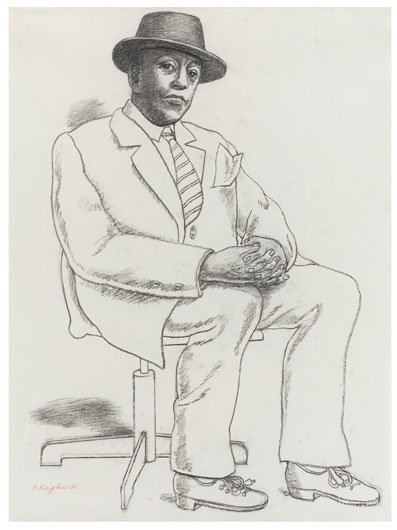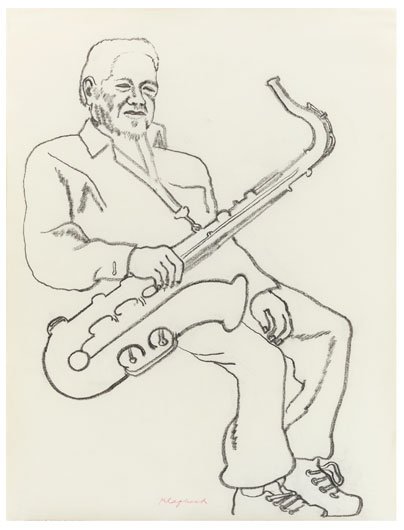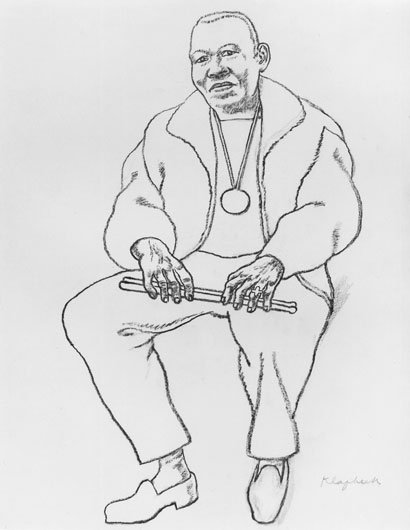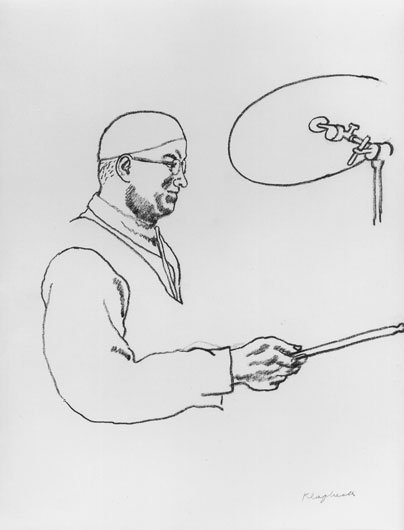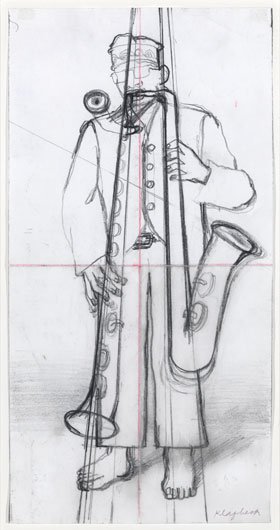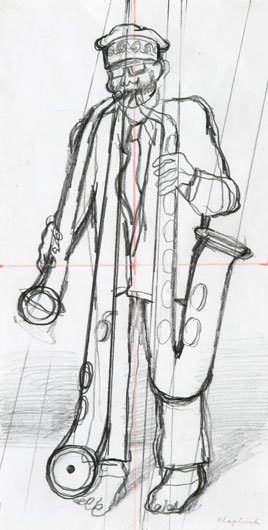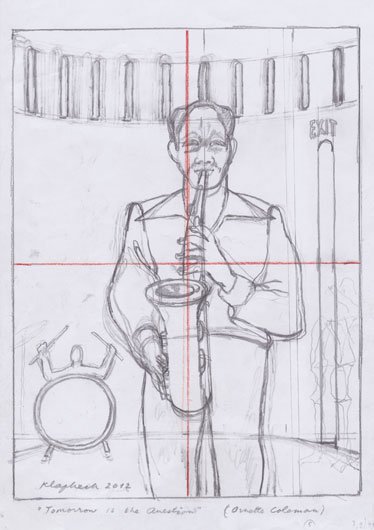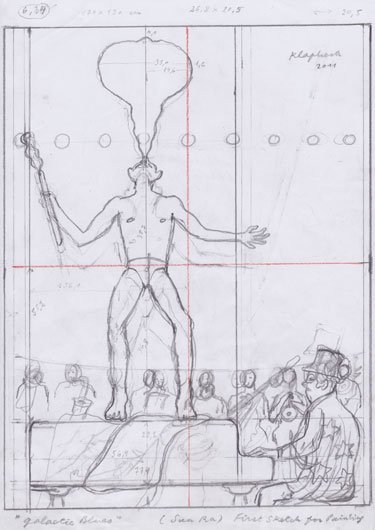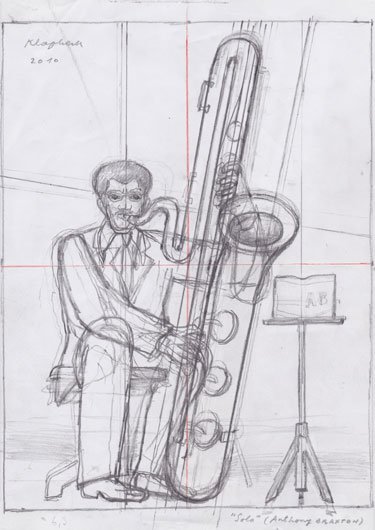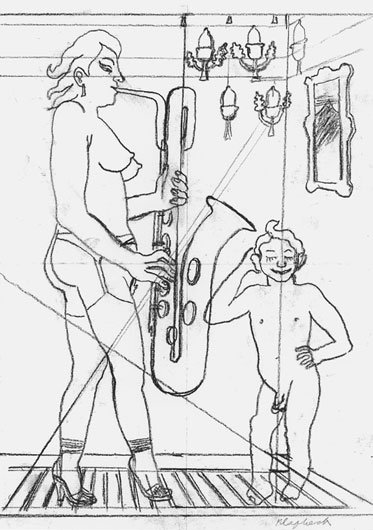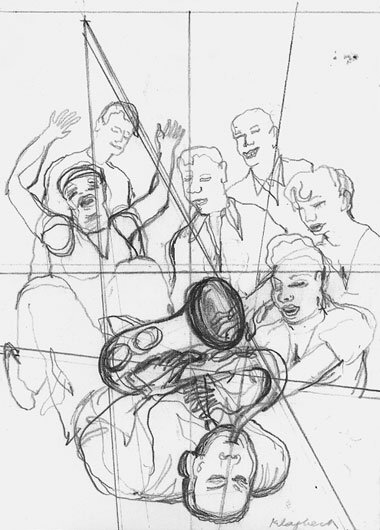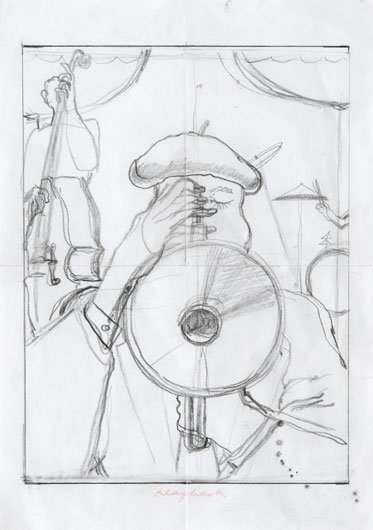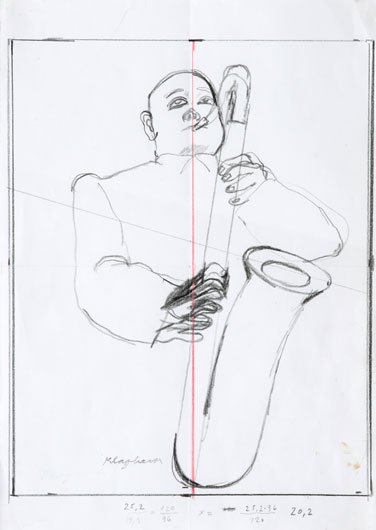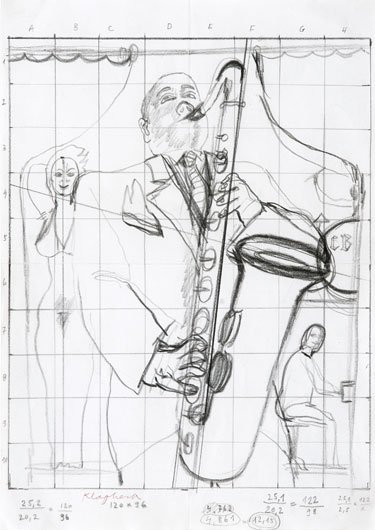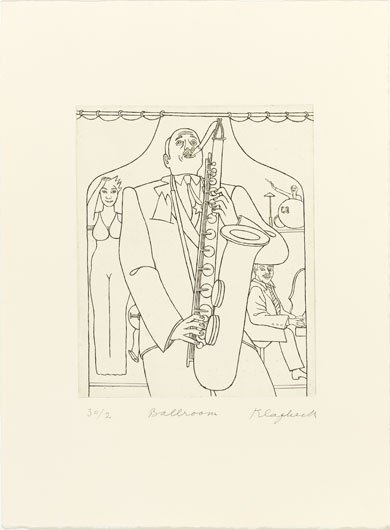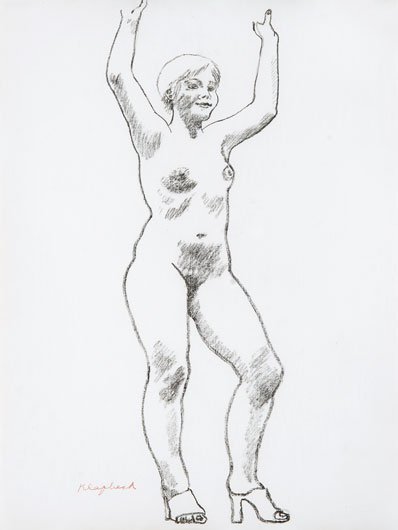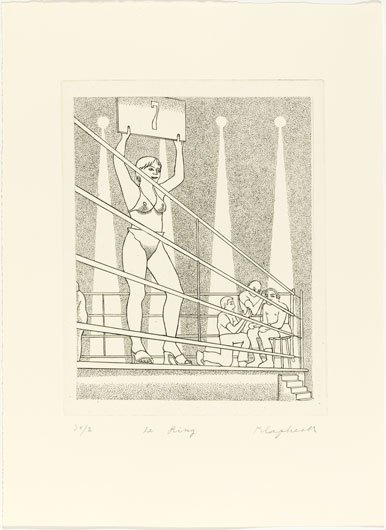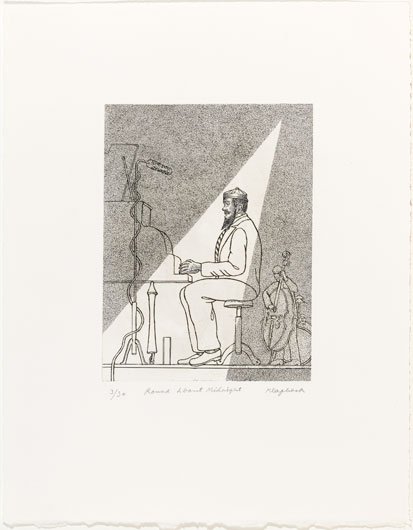Konrad Klapheck The Squared Circle
October 26 - November 27, 2013
Main Gallery





















Press Release
Opening reception at the gallery on Saturday, October 26, from 5:00–8:00pm.
Since he emerged in the mid 1950s, Konrad Klapheck has been one of the legendary figures of European painting. His early signature works were canvases of machines – sewing machines, watches, adding machines, motorcycyles, and most importantly typewriters. Under Klapheck’s brush, a typewriter carried a great variety of connotations and associations. Using his own patented perspectival system, he endowed them with personality, gender, a sense of menace or seductiveness. In the ’60s and ’70s, these machines grew more complex and fantastic, but they retained their inherent objectness, their fetishistic quality as still images of metallic beasts. Klapheck began to introduce figures into his work in the 1990s, and these, too, were unlike anything else in contemporary painting. Narrative tableaux, often explicitly erotic and even disturbing, they made clear a side of the work that had always been latent in the anthropomorphic machines. At the same time, the figurative works allowed Klapheck to return to two earlier loves: boxing and jazz. In the early ’50s, he had worked as a jazz journalist in Düsseldorf, and the new works included portraits of Charlie Parker, Billie Holiday, and Coleman Hawkins, as well as avant garde jazz figures including Archie Shepp, Anthony Braxton, and Ornette Coleman.
Klapheck’s work has been shown infrequently in the United States, most recently at Zwirner & Wirth (2007) in an exhibition curated by artist Christopher Williams. In this, Klapheck’s first exhibition in Chicago, Corbett vs. Dempsey is proud to present a selection of jazz and boxing drawings and prints by one of the most profound and enigmatic artists of the last 60 years.






